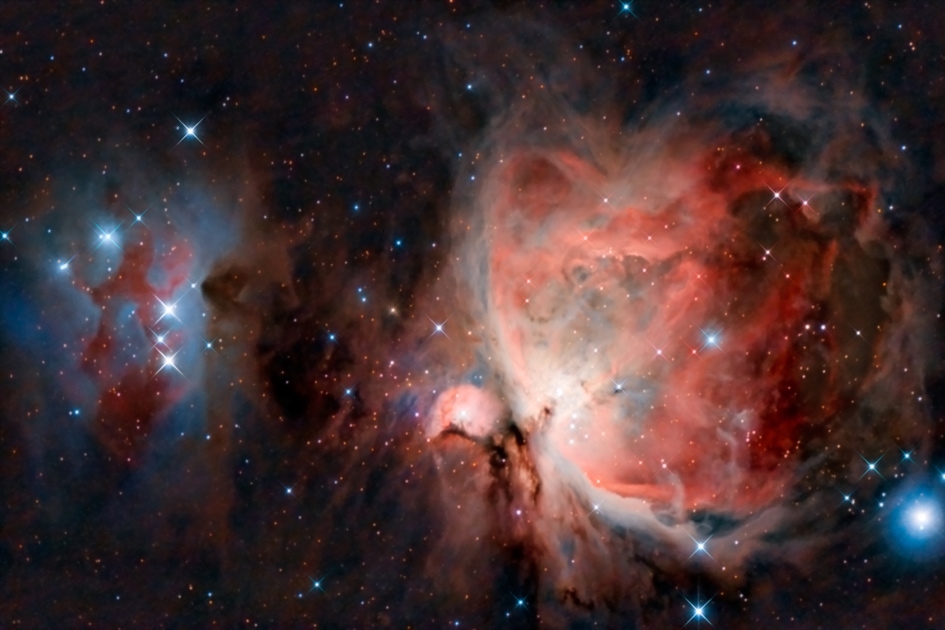Exploring The Great Orion Nebula
Grab your binoculars or telescope! Here's how to view the mesmerizing object in the night sky once described as "the great ghostly bat."

Undoubtedly one of the most beautiful objects in the night sky is the Great Orion Nebula. It resides just below Orion’s belt, surrounding the middle star of the three in line that marks the hunter’s sword (see diagram, below). It’s invisible to the unaided eye, but when observed through a good pair of binoculars and small telescope, it appears as a bright gray-green mist enveloping the star.
The Great Orion NebulaIn appears as a great glowing irregular cloud in larger telescopes. A sort of auroral glow is induced in this nebula by fluorescence, thanks to the strong ultraviolet radiation of four hot stars entangled within it. Edward Emerson Barnard (1857-1923), for many years an astronomer at Yerkes Observatory, once remarked that it reminded him of a “great ghostly bat,” and that he always experienced a feeling of surprise when he saw it.
The Great Orion Nebula is a vast cloud of extremely tenuous glowing gas and dust, approximately 1,344 light years away, and about 24 light years across (or more than 20,000 times the diameter of the entire Solar System). Astrophysicists now believe that this nebulous stuff is a stellar incubator; the primeval chaos from which star formation is presently underway.
When/where to view: Any time during the evening hours this month, with clear, dark skies. Orion is such a conspicuous star pattern it appears well up in the southern part of the sky between 9:00 p.m. and 11:00 p.m. local time.

How to locate the Great Orion Nebula: Orion’s most noteworthy feature is his three-star belt. It is oriented diagonally from lower left to upper right. Just below the belt is a fainter row of three stars oriented vertically, almost straight up and down. The middle star of that arrangement looks a bit fuzzy. If you train binoculars or a telescope on it, you will see the gaseous glow of the nebula, which is illuminated by the stars that are imbedded within it.

Joe Rao
Joe Rao is an esteemed astronomer who writes for Space.com, Sky & Telescope, and Natural History Magazine. Mr. Rao is a regular contributor to the Farmers' Almanac and serves as an associate lecturer for the Hayden Planetarium in New York City.





